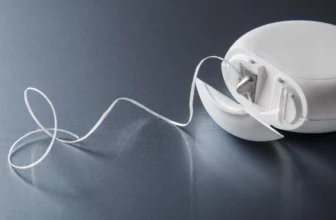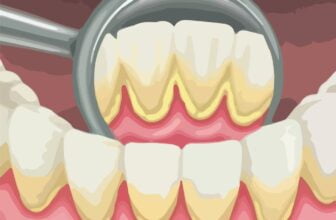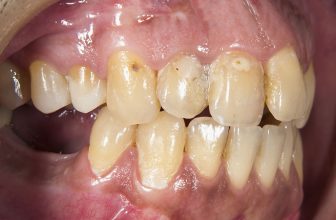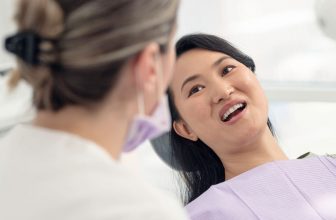Treatment of Gingival Recession
Gingival recession or Gum Recession is basically characterized by the displacement or movement of the marginal gingiva ie, gingiva or gum encircling the neck of the tooth away from its normal position.
In medical terms, it can be divided as Localized or Generalized.
- Localised Gingival Recession– When two to three teeth suffer gum receding.
- Generalized Recession– when more than 30% of total teeth suffer gum receding.
Treatment for Gum Recession
The treatment options can be surgical and non-surgical.
Non-surgical Procedures
The non-surgical option is preferred by your dentist when the recession is at its earlier stage. This option is usually non- invasive, hence, the pain or discomfort experienced by the patient is much less than the surgical treatment. These procedures are performed by the general dentists and mostly requires less sitting then the surgical treatment. Cost wise, this is much less than the surgical.
Non-surgical treatment primarily consist of correcting the predisposing factors which are leading to the gingival recession. They could be-
Correction of Tooth Brushing Technique

- Some times faulty brushing technique increases the chances of the receding gums or other gum diseases.
- The person should never brush in a horizontal direction, it will increase the chances of the recession.
- Brushing must be done in the vertical direction in front teeth and in circulatory motion in the posterior or backward teeth.
Removal of Harmful Habit
- These habits are called masochistic habits or self-inflicting trauma habits, one of them is bruxism or grinding of teeth, this causes excessive pressure over the tooth and hence causes trauma and increase the chances of a recession.
Correction of Malocclusion
- Sometimes the recession could be due to the malocclusion and can be easily corrected by the correction of malocclusion.
- Correction of malocclusion may also decrease the chances of a recession.
Scaling and Root Planing
This is the most important part when we are talking about the non-surgical treatment of the recession.
- Because the recession is in some way or the other is connected to the bacterial plaque or the increased deposits over the teeth surface. Without the removal of these, the recession cannot be treated properly.
- The scaling can be done to remove all the bacterial deposits from the tooth surface. This could be done by hand scaling or the ultrasonic scaling.
- If the deposits are deep enough that it has covered the root surface also, then the root planning must be done ie, the cleaning of the root surface and making it’s surface smooth to avoid any further depositions.
Surgical Procedure
These procedures are preferred when the recession is at its advanced stage. The surgery is done by the periodontists who are specialized in handling these type of cases. The surgical process is time-consuming and needs more precaution and care than non-surgical treatment. These include various types and your dentist will guide you to the best according to your condition.
- Tissue Grafting procedure
- Root surface modification agents
- Enamel matrix proteins
- Guided tissue regeneration
- Non-resorbable membrane barriers
- Resorbable membrane barriers
Tissue Grafting Procedure

Gum grafting procedure is the procedure in which the periodontist take the graft or the gingival tissue from the roof of the mouth or palate. And then these tissues are attached to the surface of the tooth over the recession site. After healing the receded site will be fully covered by the healthy gingival or gum tissue.
These grafts could be of different types :
Connective Tissue Graft– The connective tissue graft is the graft which is taken from the palate (Roof of the mouth). The graft is cut from the roof of the mouth and then the connective tissue layer is cut and used for grafting.
Free Gingival Graft– The free gingival grafts are very much similar to the connective tissue grafts, as they are also taken from the roof of the mouth, but in this, the layer of connective tissue is not extracted separately but as a whole is used for the covering exposed.
Pedicle Graft- In this, the tissue is taken from a different site ie, roof of the mouth is not taken, but the gum surrounding the affected tooth is cut in such a way that it is attached to its place from one end and then the gingival tissue is stretched and stitched to the original position. This technique can be used when the defect is comparatively low and also the amount of the gingival tissue present is enough.
Artificial Graft– It do not need the tissue cutting, actually they are preformed grafts.
Grafting is the whole different topic, if you want to know more about this, let me know about it in the comment section below.
Root Surface Modification Agents
Some times even after the scaling and root planning the required results are not observed. These results might be inhibited by the presence of the smear layer over the root surface which might not be removed. These can be treated with the help of root surface modifiers. Actually, the root surface modifiers are the agents which have low pH. These are introduced over the root surface and it will dissolve the smear layer and promote the reattachment and healing.
Root surface modifiers are:
- Citric acid
- Tetracycline hydrochloride
- EDTA (ethylenediaminetetraacetic acid)
- Fibronectin
- Laminin
- Doxycycline
- Minocycline
- Polyacrylic acid
- Phosphoric acid
- Formaline
- Chlorhexidine
- Hydrogen peroxide
- Cetyl peridium
- Bile salts
Enamel Matrix Protein
These are the agents which could be used to enhance the growth rate of the normal tissues surrounding the root of the tooth. These are helpful for the regeneration of the periodontal tissues. These agents mimic the events occurred during the tissue formation process, So usage of these agents are seen very favorable.
Guided Tissue Regeneration
This the process in which the gingiva or the gum tissue is made to remain separated from the root surface and the periodontal fibers are allowed to regrow between the bone and root of the tooth. Actually, in simple words, this will enhance the strength of the attachment of the tooth to its bony socket and help to repair the damage which occurred during the recession, in a better way.
These could be done by several membranes (barriers).
- Non-resorbable
- Bioresorbable
It is a wide topic if you want more information about this, let me know in the comment section below.
Post-operative Care
Normally, we can expect slight bleeding, swelling and discomfort after the surgery. These symptoms are normal if occurs in the bearable or in a limited amount. You don’t have to worry just don’t stretch your operated site and also do not spit or put pressure over the operative site. Also do not brush the site and surrounding site for 48-72 hrs, as it will put pressure over the operated site.
Instructions about symptoms after surgery
Bleeding
Don’t spit again and again because it put pressure over the bleeding site and do not allow healing. Also, don’t pull cheek or lip to see the site as it can dislodge sutures.
Swelling
- Ice or cold compress for first 8-5 hrs.
- Avoid smoking for 7 days.
- Discomfort can be avoided by painkillers (analgesics).
- Diet must be liquid, soft, cold and non-spicy.
- Physical activity restricted for 24- 48 hrs.
After several days–
- Brushing of untreated area normally.
- Antibiotics course must be completed.
- Warm moist compress to enhance the speed of the healing process.
- The suture can be dissolved with time if resorbable sutures are used, otherwise, the suture can be cut after a few days as healing occurs.
When to See your Dentist
- In case of excessive bleeding.
- Discomfort or pain which is unable to control.
- Headache and dizziness.
This was all about the treatment of receding gums, still, the topic consists of subtopics which have a wide range of information to be covered separately. If you want us to write about any specific topic, or have any question or doubt then you ask in the comment section below.






Helpful 👍
Thanks